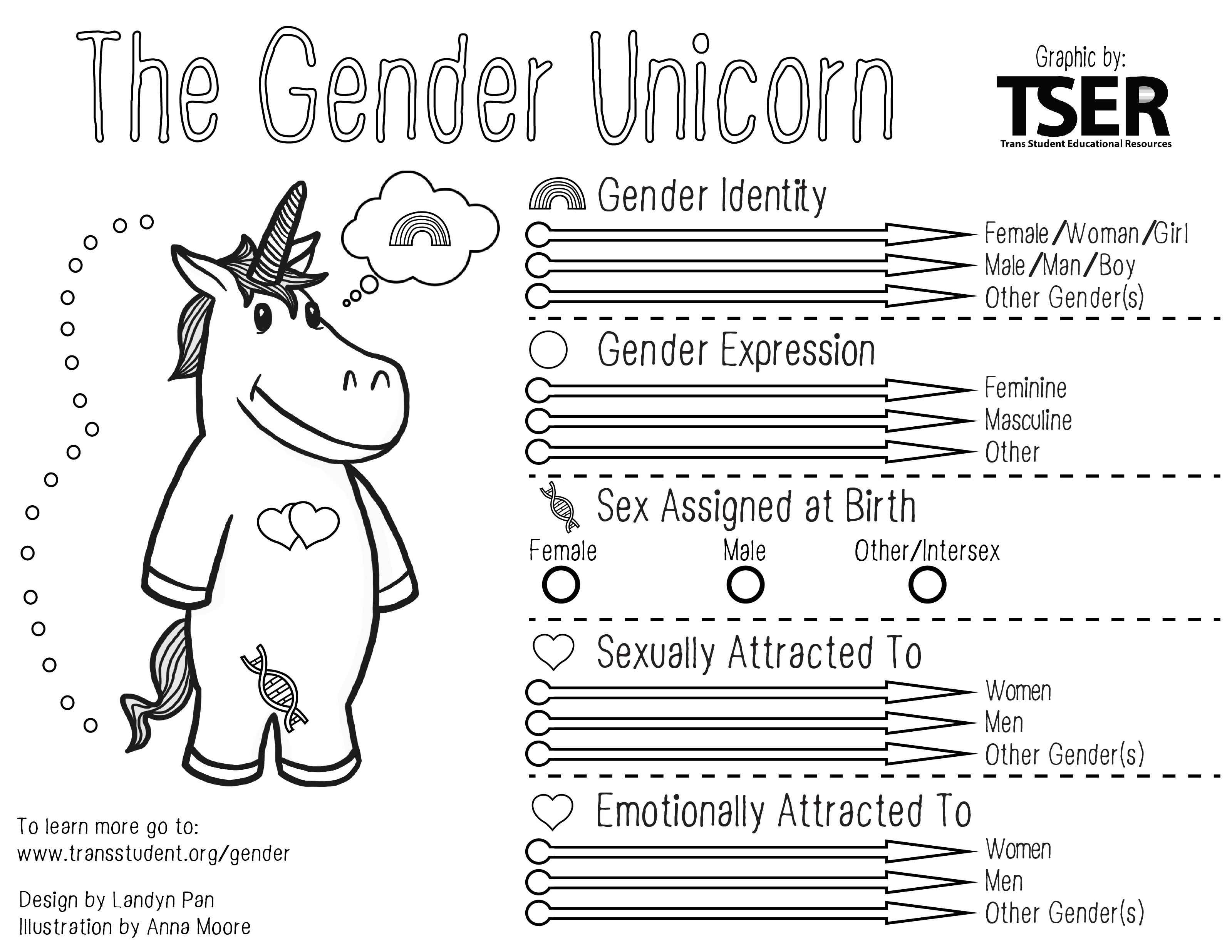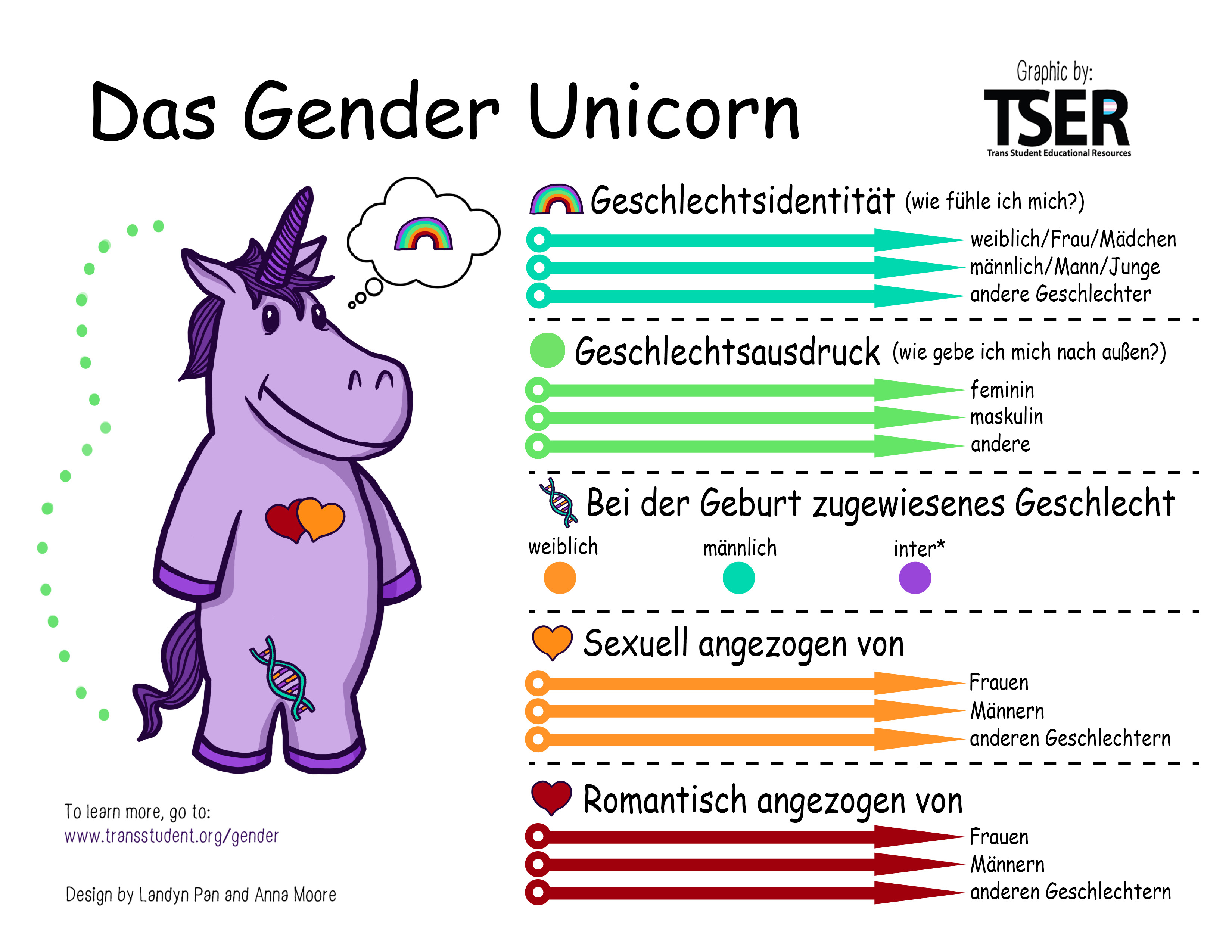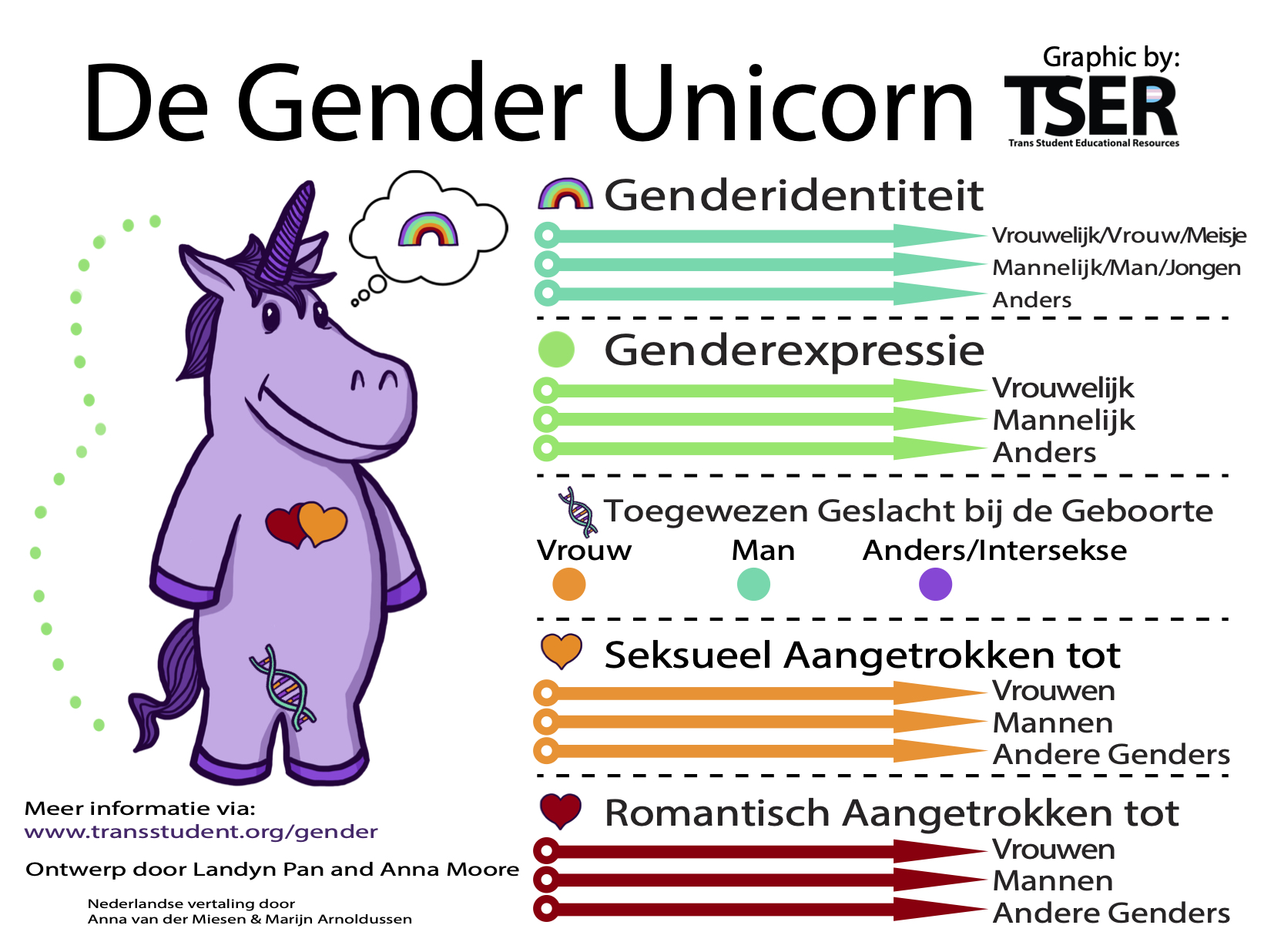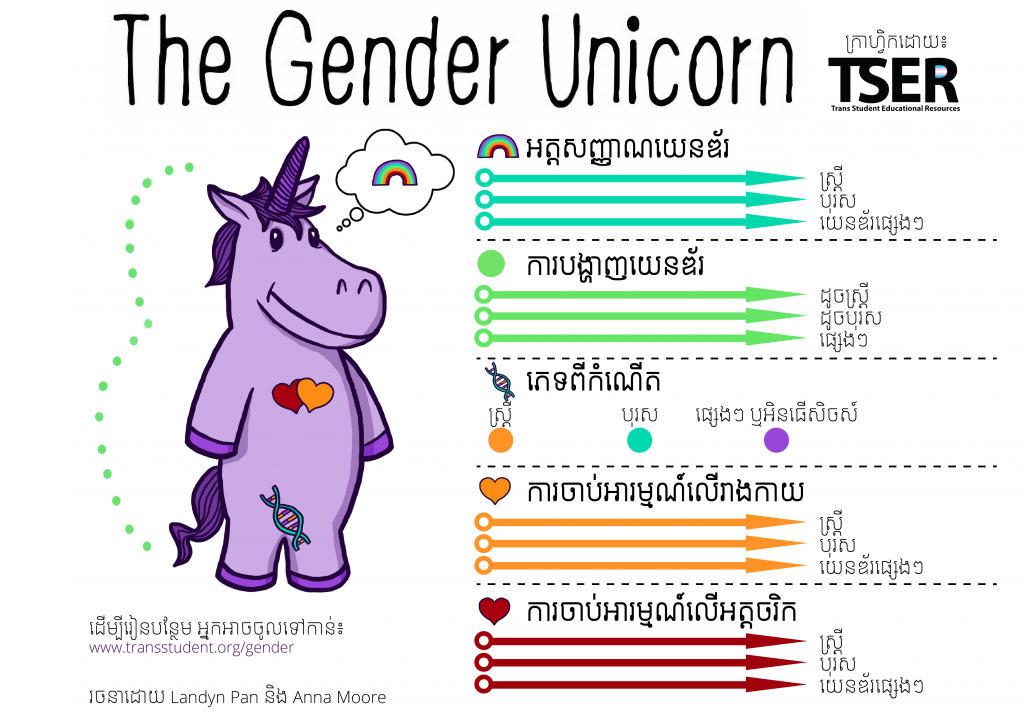Note: There is an interactive version of the Gender Unicorn that is only visible on desktop.















Definitions:
Gender Identity: One’s internal sense of being male, female, neither of these, both, or another gender(s). Everyone has a gender identity, including you. For transgender people, their sex assigned at birth and their own internal sense of gender identity are not the same. Female, woman, and girl and male, man, and boy are also not necessarily linked to each other but are just six common gender identities.
Gender Expression/Presentation: The physical manifestation of one’s gender identity through clothing, hairstyle, voice, body shape, etc. Many transgender people seek to make their gender expression (how they look) match their gender identity (who they are), rather than their sex assigned at birth.
Sex Assigned at Birth: The assignment and classification of people as male, female, intersex, or another sex based on a combination of anatomy, hormones, chromosomes. It is important we don’t simply use “sex” because of the vagueness of the definition of sex and its place in transphobia. Chromosomes are frequently used to determine sex from prenatal karyotyping (although not as often as genitalia). Chromosomes do not always determine genitalia, sex, or gender.
Physically Attracted To: Sexual orientation. It is important to note that sexual and romantic/emotional attraction can be from a variety of factors including but not limited to gender identity, gender expression/presentation, and sex assigned at birth.
Emotionally Attracted To: Romantic/emotional orientation. It is important to note that sexual and romantic/emotional attraction can be from a variety of factors including but not limited to gender identity, gender expression/presentation, and sex assigned at birth. There are other types of attraction related to gender such as aesthetical or platonic. These are simply two common forms of attraction.
Usage:
The Gender Unicorn uses a Creative Commons License. This means you can share the infographic with credit, even for commercial purposes. You do not have to request permission to use it.
Recommended citation:
Trans Student Educational Resources, 2015. “The Gender Unicorn.” http://www.transstudent.org/gender.
Example of how to fill out your own Gender Unicorn:

Many people were curious if agender and asexual people were included in this graphic. In short, they are. For example, identifying on the left of the sexuality spectra would indicate no attraction. Each arrow is a sliding scale, not a checkbox.
Changes from The Genderbread Person
You may recognize this graphic as similar to The Genderbread Person
by itspronouncedmetrosexual. We created this graphic with significant changes to more accurately portray the distinction between gender, sex assigned at birth, and sexuality. Ultimately, we wanted to recognize genders outside of the western gender binary, which the Genderbread Person does not. Not all trans people exist on a scale of womanhood and manhood. There are several other issues with this graphic such as the use of the inaccurate term “biological sex,” the use of “asex” (which fails to recognize that everyone has sex characteristics prescribed to them), and several other issues with terminology and presentation.
Sources:
Queer and trans organizers have been making the distinction between gender identity, gender presentation/expression, sex, and attraction for decades. No one person or organization has created the concept. However, similar gender mapping concepts to the unicorn seem to have originated on social media sites like Tumblr.
Illustrations by Anna Moore. Design by Landyn Pan, Eli Erlick, and many others.
If you have any questions, feel free to email us at TSER [at] transstudent.org!




